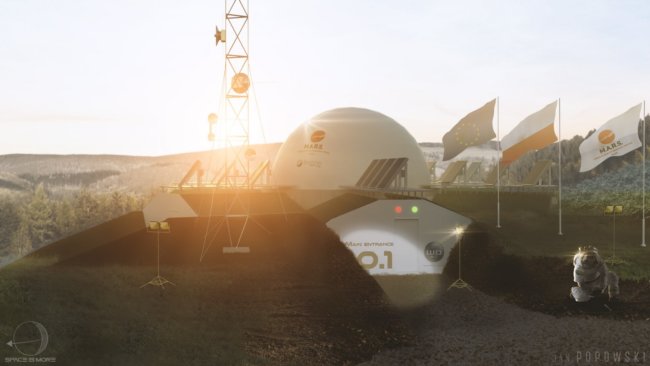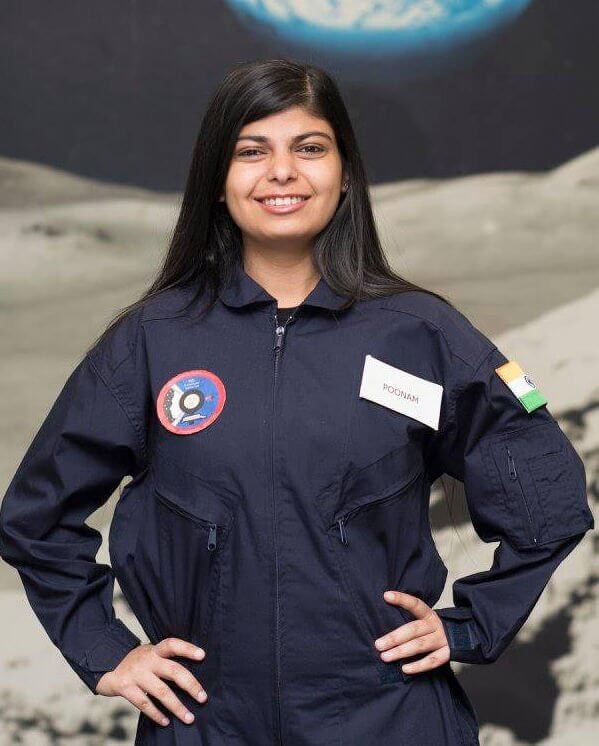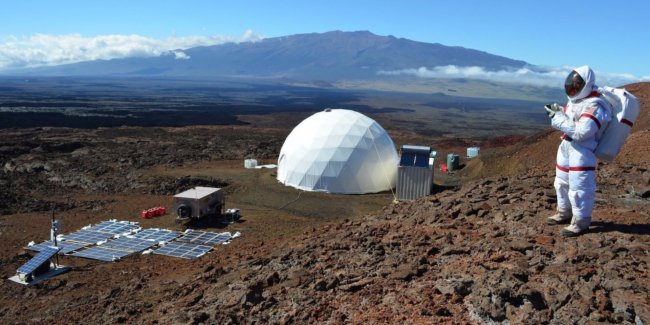
Inside the old hangar for military bombers, located in Western Poland, in a short time, the start of the experiment to simulate life on the moon and Mars. Within two weeks of the “mission” called Poland Mars Analogue Simulation 2017 (abbreviated all PMAS) will be the observation of a group of six volunteers, acting as “astronauts,” and operating in strict compliance with the tight schedule of future space explorers. After that, the organizers of the experiment will be ready to transfer all information collected to any country or private companies that are planning their own manned mission beyond Earth.
“This mission will be one of the most realistic ever conducted in Europe and imitating the life and work on Mars,” commented the representative of all PMAS 2017 Mina Takla in an email to the publisher of Business Insider.
The experiment plans which the newspaper first learned of the event Dawn of Private Space Science Symposium, held June 4, headed “Project group of space research” (Space Exploration Project Group, SPEG), which is part of an “Advisory Council the space generation” (Space Generation Advisory Council), working with the UN on issues in the field of space research. The program will be attended by other partners such as the organization of the Mars society, and the European space Agency.
To implement the program all PMAS 2017, the organizers have attracted the interest of private investors. Additional funds in the amount of several tens of thousands of dollars, managed to obtain through various crowdfunding platforms. In addition, for the construction of the home company Space Garden Company – partner of the project managed to reach an agreement on the supply of building materials. The creators called the project home Modular Martian Analog Research Station (Mars modular analogue research stations), or just M. A. R. S.
According to the original plans improvised outer housing, inside which will be held the experiment, the organizers wanted to use in the design of the station, designed by the British architect Scott porter. In this type of station was a connected by a cross four modules. However, later it was decided to abandon this design and instead use the U-shaped station. Originally selected in the southern part of Poland also was replaced to the location, located in the Western part of the country.
“The Central feature of the project is a U-shaped housing, connected to the military hangar, located near the Polish town of Pila,” adds Takla.
New U-shaped base M. A. R. S will be divided into six different rooms, each of which will be used for their own purposes. There will be “a research center, residential area (including gym), sleeping area, bathroom, kitchen, and storage and technical area,” says Takla. Exit and entrance to the house is intended to serve as a special gateway.
Unfortunately, tackle is not provided to Business Insider no photos or even sketches of the future station, and not reported, whether completed its construction. But if all goes according to plan, six “astronauts” will dwell in it since July 31 and live and work there until August 13.
The experiment will involve volunteers from Puerto Rico, Israel, Spain, France, India, USA, Nigeria and other countries. In addition, outside the walls of a makeshift “Martian” bases will work group support, around the clock monitoring of the experiment. The center will be located in toruń.

Parampreet Kaur Yusan, one of the six “astronauts”, which will live at the station M. A. R. S. for two weeks
“All PMAS 2017 will be one of the most international, multicultural and multidisciplinary simulations, space missions of all time. In it will participate people from more than 28 countries, representing a variety of scientific disciplines: astrophysics, psychology, Geology, biology, engineering”, — said Takla.
In addition to the strict observance of the schedule of experiments, maintenance and leisure time, the organizers of the mission are going to spend the simulation of other important activities and features, which will have to face the real astronauts who will go to Mars and the moon. It is first and foremost about the events in the use of space suits, as well as simulation of such features as the latency of communication messages.
“The first three days of the 14 day simulation will be conducted in the “lunar module”. The link between station and control Center will be carried out in real time. The remaining 11 days of the experiment will be associated with the simulation of life in the Martian habitation module,” commented TAYANA Lucic, co-founder of the SEPG.
When “the Martian part of the experiment,” said Lucic, “time delay of communications between the centre and the station will be 15 minutes, thus simulating a feature of the long-distance transmission between Earth and Mars.”
Project all PMAS 2017, it should be noted, is not the only one in which experts are trying to figure out what challenges will be faced in an isolated environment, working on a lunar or Martian base in the future real astronauts and colonists.
For example, in the experiment, the HI-SEAS conducted in the Hawaiian Islands, “astronauts” have to live and work inside the home, built on an extinct volcano.

Mars base simulation HI-SEAS is located at the crater of an extinct Hawaiian volcano Mauna Loa
Russia, China and the European space Agency conducted an experiment “Mars-500” with the participation of six “astronauts”, which also had to take a long psychological test. In isolated conditions, six people spent a total of 520 days, or almost a year and a half. The objective of the experiment was to find out the difficulties that have to face real people who will fly to Mars and finding a solution to these difficulties. As it turned out, one of the most debilitating problems, which had to meet people was banal boredom, to fight with which really turned out to be very difficult.
Of course, such experiments, their results and information that can be gathered within them, will be very useful for those countries (or private companies) who plan to one day send people to Mars. In the end, whoever decided to spend on the implementation of such an ambitious project several tens of billions of dollars (and that is how much can cost a manned mission to the red planet), most likely, it would want in advance to ensure that the crew of such missions will be able not only to survive but to have a great time, about 225 million kilometers from Earth.
Poland will conduct an experiment to simulate life on Mars
Nikolai Khizhnyak